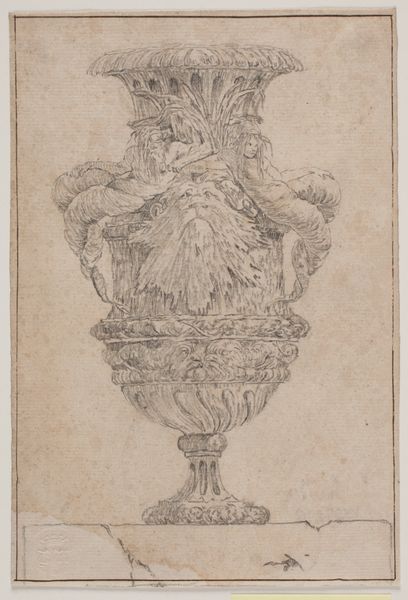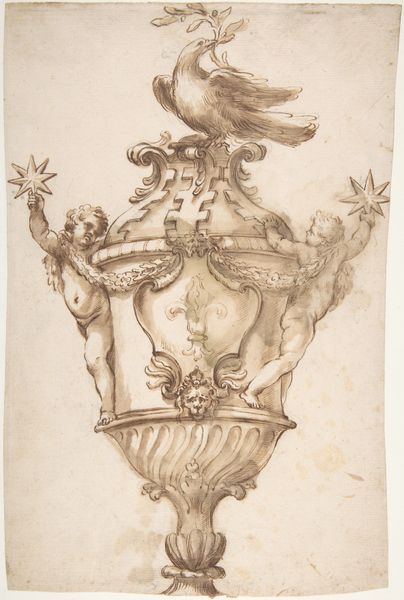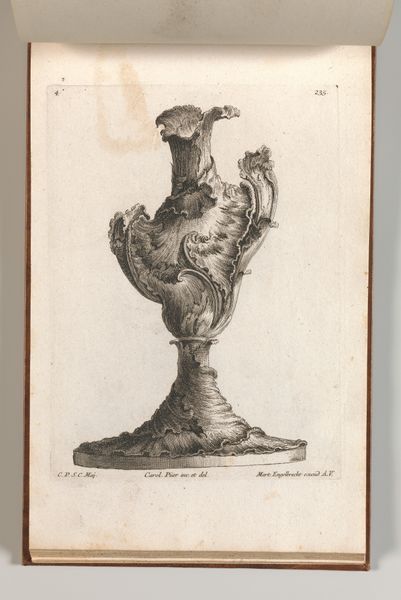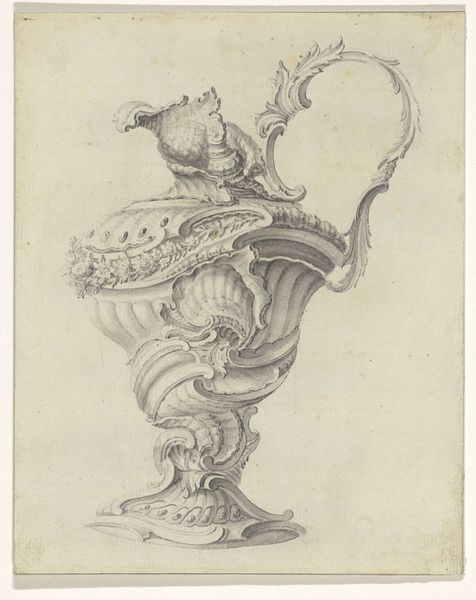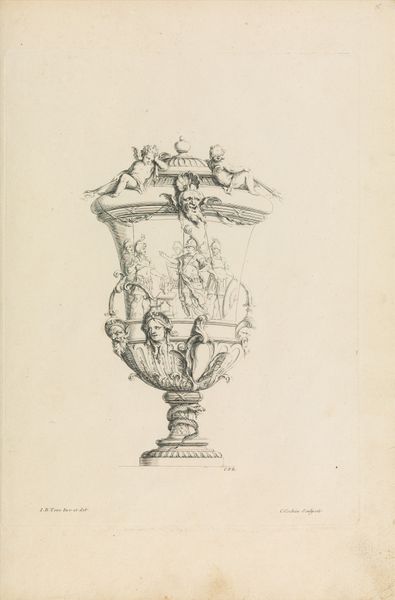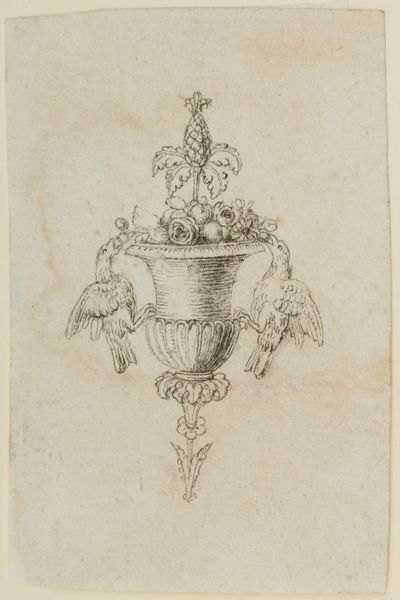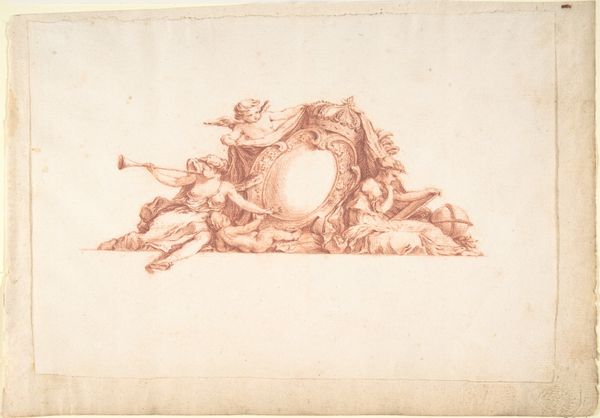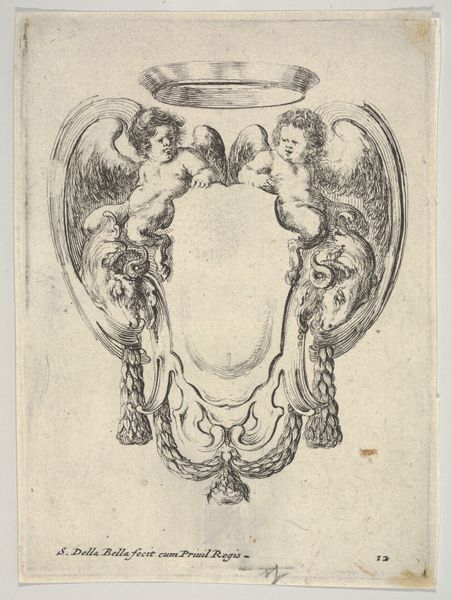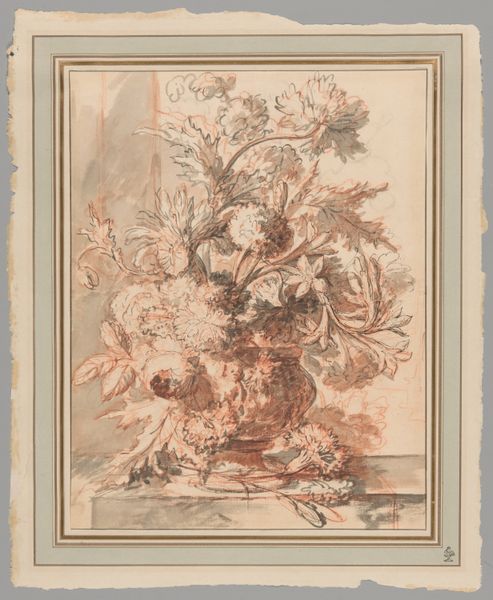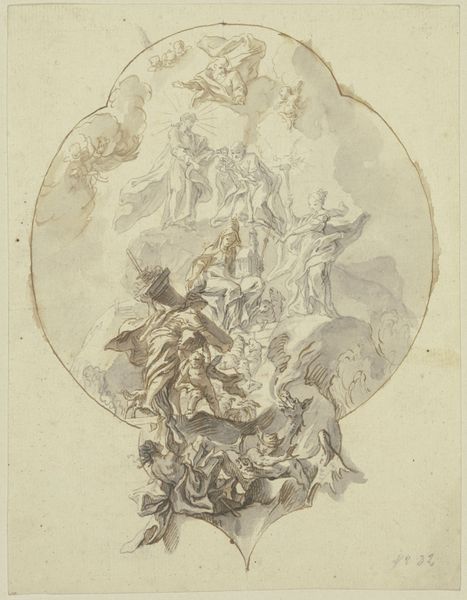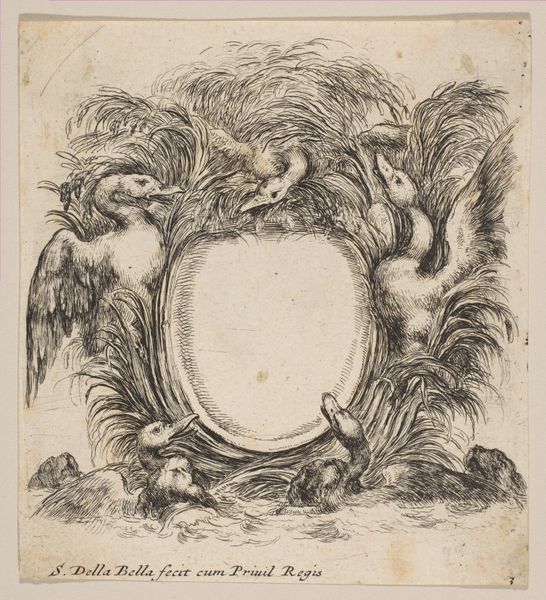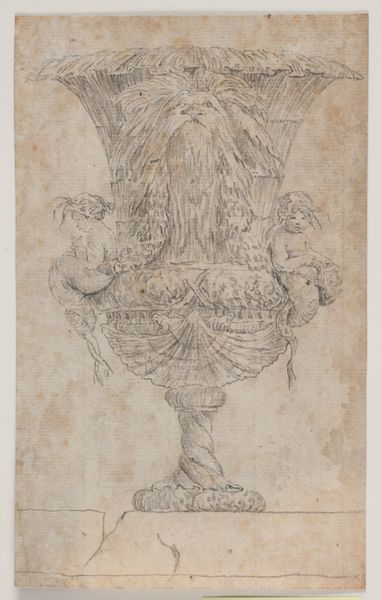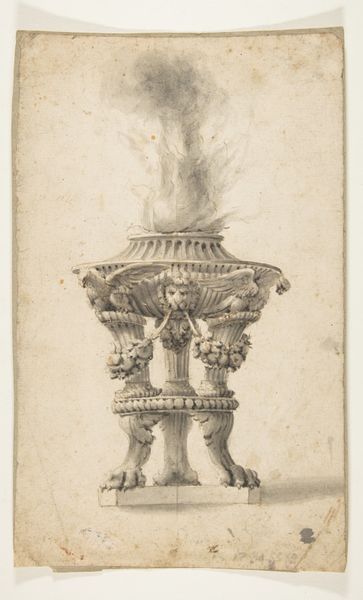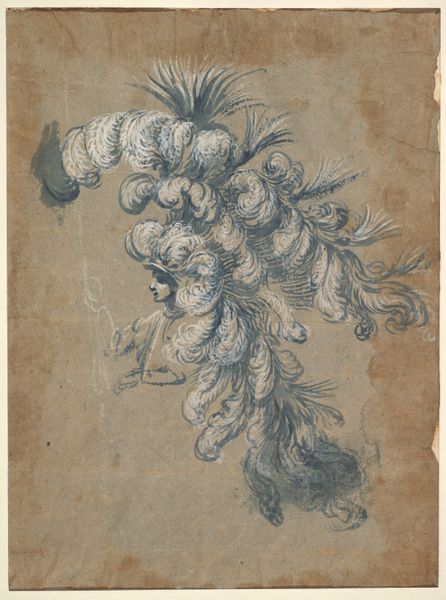
Prydvase med to hoveder og to putti. Kopi efter pl. 19 i suiten af de i 1746 f Saly tegnede vaser. "Vasa a se inventa..." 1717 - 1776
0:00
0:00
drawing
#
drawing
#
allegory
#
baroque
#
figuration
#
decorative-art
Dimensions: 171 mm (height) x 124 mm (width) (bladmaal)
Editor: This drawing, “Prydvase med to hoveder og to putti,” created between 1717 and 1776 by Jacques François Joseph Saly, is an interesting sketch for a vase. The reddish-brown lines create a somewhat ornate, baroque feel. It looks like a classical form adorned with cherubs and faces. What’s your read on this work? Curator: Well, looking at this drawing through the lens of cultural history, it's fascinating. It's not just a decorative sketch; it's participating in the 18th-century fascination with classical forms. Notice how Saly includes "putti," or cherubs, and faces, transforming this utilitarian object, the vase, into an allegory. What political or social statements do you think a design like this would evoke when translated into an actual piece? Editor: That’s interesting. It makes me think about status. Displaying something this elaborate would really shout about wealth and classical education, wouldn't it? Did the social function of art change from the Renaissance? Curator: Absolutely. The baroque style was embraced by royal courts and aristocratic patrons throughout Europe, a departure from earlier commissions of religious work in previous eras. The shift toward classicism and mythology within those courts offered powerful visual narratives about leadership, stability, and divine right at a time of huge societal transformation. Consider how this drawing embodies power relations in 18th-century society through design. Editor: That makes so much sense. I was focusing on the aesthetics, but understanding the social and political context really deepens my appreciation of the piece. Curator: Precisely. Analyzing art means always questioning its role within institutions and societal dynamics. I'm glad this made you see it from this perspective!
Comments
No comments
Be the first to comment and join the conversation on the ultimate creative platform.
